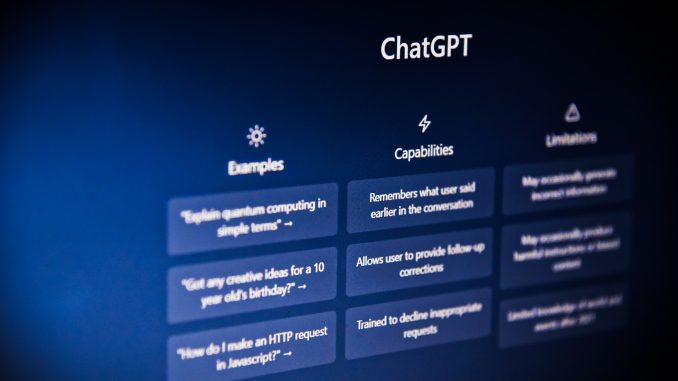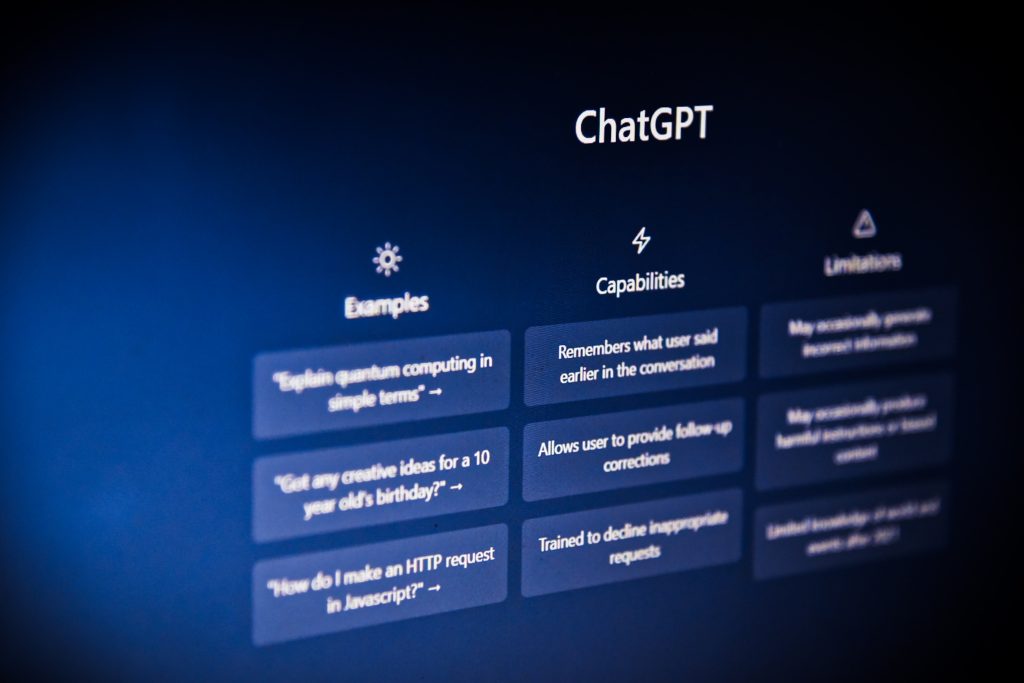

ChatGPT is a state-of-the-art language model developed by OpenAI that is designed to perform various natural language processing tasks such as text classification, language translation, and question-answering. The model is based on the GPT-3.5 architecture, which is an extension of the GPT-3 architecture, and is trained on a massive corpus of text data using unsupervised learning techniques. In this article, we will discuss what ChatGPT is, how it works, how to use it, and why it is useful.
What is ChatGPT?
ChatGPT is an advanced natural language processing model developed by OpenAI. It is the successor to the GPT-2 and GPT-3 models, and is based on the Transformer architecture, a type of neural network that has been widely used for language processing tasks.
The “GPT” in ChatGPT stands for “Generative Pre-trained Transformer”. As its name suggests, ChatGPT is designed to generate human-like text by “pre-training” on massive amounts of text data from the internet. This pre-training helps the model learn the patterns and structures of natural language, so that it can generate coherent and contextually-appropriate responses to user inputs.
ChatGPT is capable of a wide range of natural language processing tasks, including text classification, question-answering, and language translation. However, one of its most notable features is its ability to generate human-like responses to user inputs in natural language conversations. This has led to its widespread use in chatbots, virtual assistants, and other conversational AI applications.
Overall, ChatGPT represents a major breakthrough in natural language processing and has the potential to revolutionize the way we interact with language and AI technology.
The model has been trained on a wide range of topics, including science, technology, art, and history, and is capable of generating high-quality responses to a wide range of natural language queries.
Where GPT-3 can be improved as GPT-4 ?
GPT-3.5 could potentially be an improved version of GPT-3, building upon its strengths and addressing some of its limitations. For example, GPT-3 has been criticized for its tendency to generate biased or offensive language, and for its inability to consistently answer more complex questions or perform common sense reasoning tasks. GPT-3.5 may address these issues by improving its training data, fine-tuning algorithms, and incorporating more advanced natural language processing techniques.
One area where GPT-4 could potentially improve upon GPT-3.5 is by increasing its performance on tasks that require a more nuanced understanding of context and reasoning. For example, GPT-4 may be able to better understand and reason about complex logical or causal relationships between different pieces of text, enabling it to answer more complex questions or perform more advanced text-based tasks.
Another potential area of improvement for GPT-4 is in its ability to generate more diverse and creative language. GPT-3 has already demonstrated impressive language generation capabilities, but it is still limited in its ability to generate truly novel and imaginative language that goes beyond what it has seen in its training data. GPT-4 may be able to overcome this limitation by incorporating more advanced language generation techniques, such as generating language based on multiple perspectives or generating language that incorporates more sophisticated forms of creativity and humor.
In general, the expected differences between GPT-3.5 and GPT-4 will likely depend on the specific advancements in natural language processing research and the unique challenges and limitations that the GPT models face. As with previous releases, GPT-4 is likely to be a significant improvement over its predecessor in terms of its language generation capabilities and ability to perform complex text-based tasks.
How does ChatGPT work?
ChatGPT works by analyzing natural language inputs and generating natural language outputs that are relevant to the input. The model is based on a transformer architecture, which is a type of neural network that is designed to process sequential data such as text. The transformer architecture is composed of an encoder and a decoder, which work together to process natural language inputs and generate natural language outputs.
The encoder takes a natural language input and converts it into a series of hidden representations that capture the meaning of the input. The decoder takes these hidden representations and generates a natural language output that is relevant to the input. The output is generated one word at a time, with each word being generated based on the context provided by the previous words.
ChatGPT is designed to work with a wide range of natural language inputs, including questions, statements, and commands. The model is also capable of generating natural language responses that are tailored to the context of the input. For example, if the input is a question about the weather, the model will generate a response that is specific to the location and time of day.
How to use ChatGPT? Is ChatGPT free to use?
ChatGPT is Free to use with current version & can be used in a wide range of natural language processing tasks, including text classification, language translation, and question-answering. To use ChatGPT, you will need to have access to a language model API that provides access to the model’s capabilities. OpenAI provides access to its language model API through its website, which allows users to access the model’s capabilities through a simple web interface.
To use ChatGPT, you will need to provide a natural language input, such as a question or statement, and the model will generate a natural language output that is relevant to the input. The output can be in the form of a text response, a translation of the input into a different language, or an answer to a specific question.
Why is ChatGPT useful?
ChatGPT is useful for a wide range of natural language processing tasks, including text classification, language translation, and question-answering. The model is capable of generating high-quality responses to a wide range of natural language queries, and is designed to work with a wide range of natural language inputs.
One of the main advantages of ChatGPT is its ability to generate natural language responses that are tailored to the context of the input. This means that the model can generate responses that are specific to the topic of the input, the location of the user, and the time of day. This makes the model ideal for use in a wide range of applications, including customer service, education, and research
Another advantage of ChatGPT is its ability to generate natural language responses that are similar to those of a human. This makes the model useful for applications that require a high degree of human-like communication, such as chatbots and virtual assistants. The model’s ability to generate natural language responses also makes it useful for applications that require a high level of accuracy and precision, such as medical diagnosis and legal analysis.
ChatGPT is also useful because it can be trained on a wide range of topics, including science, technology, art, and history. This means that the model can be used to generate natural language responses on a wide range of topics, making it ideal for use in a wide range of applications. Additionally, the model can be fine-tuned to specific domains, allowing it to generate more accurate and relevant responses for specific applications.
Another advantage of ChatGPT is its ability to learn from data in an unsupervised manner. This means that the model can be trained on large amounts of text data without the need for explicit labels or annotations. This makes the model highly scalable, as it can be trained on massive amounts of data without the need for human supervision.
ChatGPT can also be useful for generating natural language data for training other natural language processing models. For example, the model can be used to generate synthetic training data for language translation models, allowing these models to be trained on a wider range of data.
Conclusion:
In conclusion, ChatGPT is a powerful language model that is capable of generating high-quality natural language responses to a wide range of queries. The model is based on a transformer architecture and is trained on a massive corpus of text data using unsupervised learning techniques. ChatGPT is useful for a wide range of natural language processing tasks, including text classification, language translation, and question-answering. The model’s ability to generate natural language responses that are tailored to the context of the input, and its ability to learn from data in an unsupervised manner, make it highly scalable and versatile. ChatGPT is a valuable tool for researchers, developers, and businesses looking to leverage the power of natural language processing in their applications.

Leave a Reply